Disclosure: Meeple Mountain received a free copy of this product in exchange for an honest, unbiased review. This review is not intended to be an endorsement.
Tactigon sounds like an odd mash-up of Tactical and Hexagon. So, what is Tactigon?
Tactigon is an abstract strategy game by designer Andy Shaw. It is made up of unique pieces, each with specific movements and capturing/annihilation properties and two winning conditions. Played on a narrow board made up of hexagons, it offers a deep set of strategies to consider, all in a game that can be played in ten to fifteen minutes.
(NOTE: My photos are of a 3D Printed preview copy from the designer. The final version that Kickstarter backers will receive will feature mold-injected versions of both the board and pieces.)

Setup
Assemble the board and place it lengthwise between the two players. Choose a color (Teal or Red) and take all the pieces of your color.
Each piece is topped with a 3D shape: a Sphere, a Triangle, a Square, or a Pentagon. The starting point for each of these pieces is clearly marked on the board.
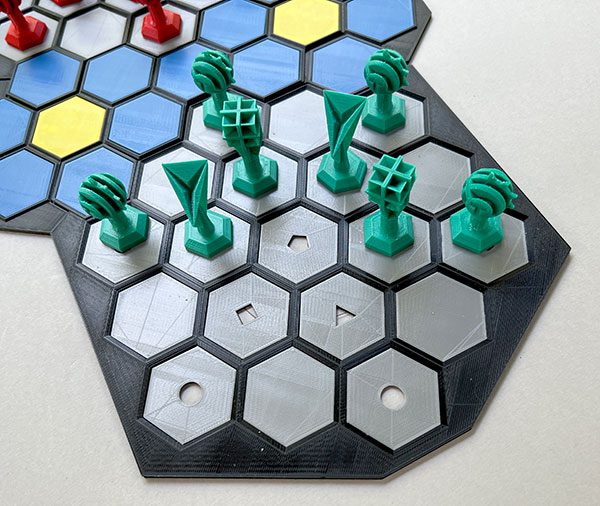
Pentagons will be in the center of their hexagonal formation, immediately surrounded by Squares and Triangles. Spheres are placed at the end of a line extending from Pentagon to the edge of the board.
Get all your pieces in their correct spots and you’re ready to play.

Winning the Game
One of the most interesting things about Tactigon is that there are two ways to win the game:
- Capture your opponent’s Pentagon
- Occupy the two gold hexes, one on either side at the middle of the board, at the end of your opponent’s turn
The narrow Tactigon board widens in the middle. The extra hexes allow for both a center hex and to allow other hexes to fully surround both gold hexes. More on these later.
Outwit, Outflank, Outlast
In Tactigon, piece movement is simple. A Sphere has one side, so it can move one space at a time. The Triangle has three sides, so it can move up to three spaces; the Square can move up to four spaces; the Pentagon up to five.
While this is intuitive, the way in which pieces can or cannot capture other pieces is a bit more involved. In general, like pieces can capture like pieces (e.g., Squares can capture Squares). However, the greater the movement, the fewer pieces it is able to capture.
The best way to explain this is with an image from the Tactigon website:
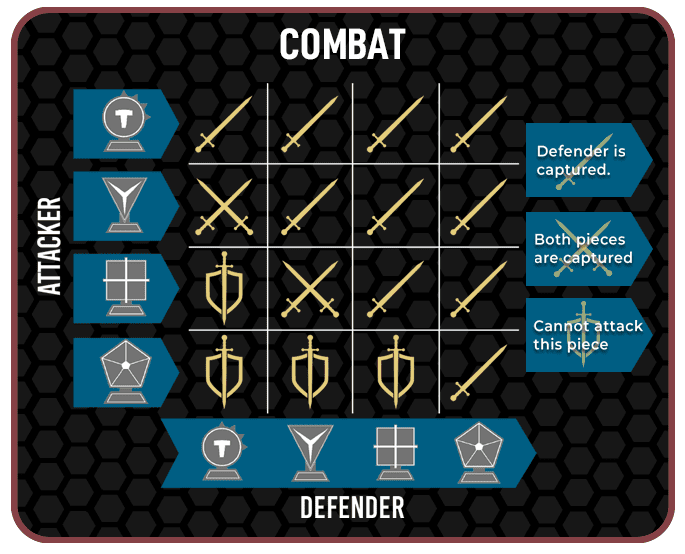
Spheres can capture all pieces. Triangles can capture all pieces, save for Spheres. A Triangle can capture a Sphere, but the Triangle is annihilated as part of the capture and is also removed from the board. Squares cannot capture Spheres, they annihilate when capturing Triangles, but can capture other Squares or the Pentagon. A Pentagon can only capture the opposing Pentagon.
I didn’t quite understand the reasoning behind these limitations until I played my first game. The greater the mobility a piece has, the weaker its Attack capabilities; the less mobile, the greater the capturing threat. Here, the pawns the Spheres have the most capturing power.
Pieces move from hex to hex, but cannot jump over other pieces. This means, if you want to bring up some of your mid- or backfield pieces, you must first move pieces on the front lines to make way for them.
In my very first game, in a rush to threaten to capture the two gold hexes, I mistakenly used my Spheres to capture any pieces with more sides. My thinking was that the Sphere’s single space movements meant they were simply getting in the way of my more mobile pieces. After several exchanges, however, I realized I had unwittingly hampered my ability to capture my opponent’s remaining pieces.
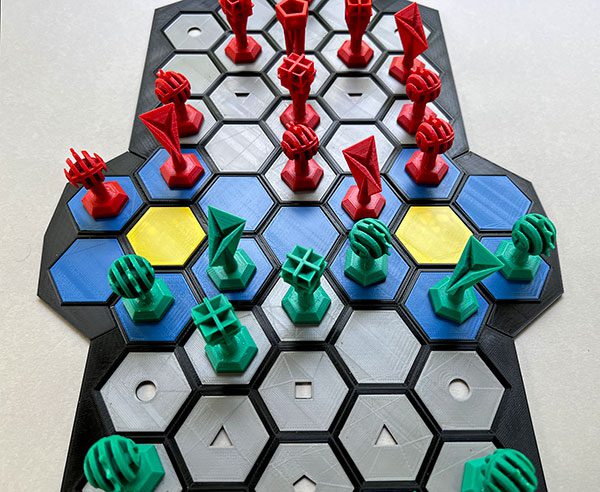
The Can/Can’t Capture or Annihilate part of the game felt a bit odd at first, but this is one of those twists in the game that I’ve come to appreciate. Without it, the play would be almost predictable; with the limitations in place, a deeper level of strategy comes into play.
Final Thoughts
In the games I’ve played, the two gold hexes were the obvious points to amass attacks upon. Knowing when to use which piece to capture another, or when it’s worth the price of annihilating your own piece to capture another piece, is a big part of winning the game.
As well, most games have only lasted about 10 minutes. All first games with a new opponent have ended with them setting up their pieces right away for a second game.
At first glance, Tactigon may seem like just another move-and-capture game with little special going for it. Instead, designer Andy Shaw has taken a relatively simple concept and, by making just a few changes, elevated his game to something far more interesting and challenging, while still keeping it approachable to new players.
I’m always impressed by designers who can take a familiar system and, with a few well-thought out additions, create a new game that’s both easy to learn and has a good depth of strategy. Shaw has certainly done this with Tactigon.
Tactigon was fully funded in four and a half hours. As of this writing (April 2023) the Kickstarter campaign is still going on. If you enjoy abstract strategy games, I encourage you to check it out.


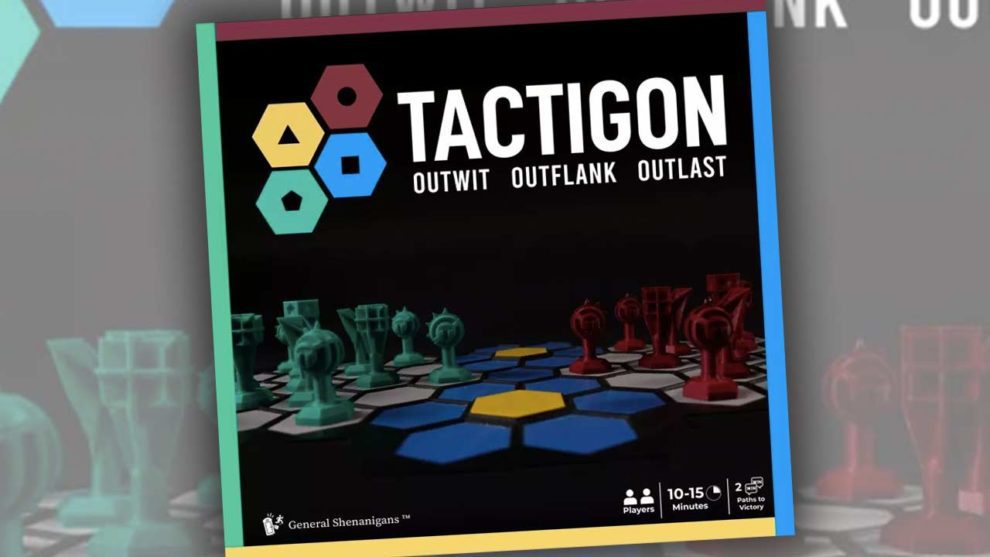

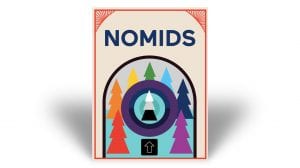






Add Comment